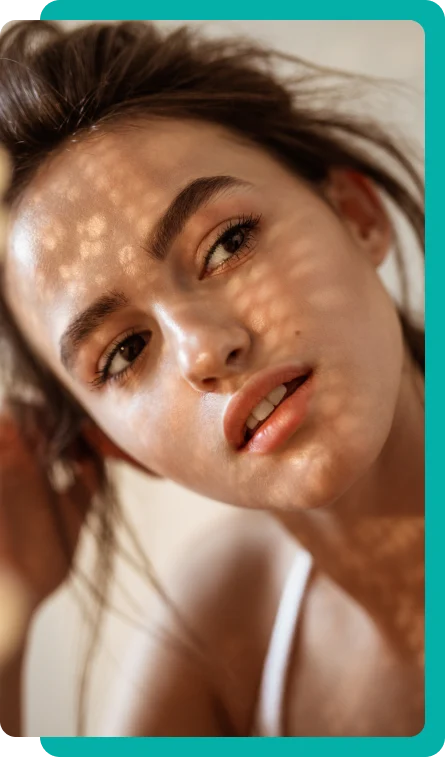For Patients
About
For Providers
Locations
Blog
Contact
Menu
That swollen feeling in your cheeks after getting filler isn't just in your head. Malar edema, a common side effect of cheek filler injections, can leave your face looking puffy, lumpy, and just plain weird. If you've noticed an odd swollen sensation in your cheeks after filler, you're not alone. Malar edema is a sneaky side effect that can show up days or even weeks after your injection appointment.
Don't panic yet - the swelling should go down on its own. But it's crucial to know what causes malar edema, what you can do to reduce it, and when to call your doctor. In this post, we'll dive into everything you need to know about malar edema after cheek fillers so you can get back to looking like your gorgeous self again.
Malar edema refers to swelling located on the malar eminence, which is the protruding part of the cheekbone directly under the eye. It manifests as puffiness and fullness in the under-eye region extending to the upper cheek. Malar edema specifically involves fluid accumulation and inflammation of the soft tissues overlying the cheekbone.
Unlike regular post-procedure swelling which resolves within a few days, malar edema is excessive and persistent fluid buildup. It is an adverse event associated with dermal filler injections in the tear troughs and cheek area. Malar edema can be unsettling given its visibility on the face. Identifying, managing and preventing this condition is crucial for satisfactory outcomes after soft tissue augmentation.

There are several potential causes and risk factors for developing malar edema after dermal filler injections:
Those with thin under-eye skin are especially susceptible, as are patients with a history of malar edema following filler injections. Careful patient selection and injection techniques reduce the risks.
It is normal to experience some swelling, redness and tenderness after filler injections. However, malar edema is excessive and represents an adverse reaction versus standard post-procedure inflammation.
Malar edema can arise shortly after filler injections or have a delayed onset days later. Typical signs include:
The swelling is most prominent over the malar prominence of the cheekbones. It may be mild or lead to severe fullness extending down to the nasolabial folds. Malar edema should resolve over time but can be persistent.
Regular swelling resolves in 2-4 days, but malar edema can persist for weeks or longer. It also tends to be firmer and more pronounced despite anti-inflammatory medications. If swelling worsens after the first 1-2 days or remains after a week, patients should notify their provider promptly for evaluation.
Malar edema signifies an underlying complication from dermal filler injections in the cheek area. Some potential adverse events include:
Thus, persistent malar edema warrants examination to rule out serious complications requiring treatment. Patients should discuss the risks before undergoing any dermal filler procedure.
For mild cases of post-filler malar edema, the following conservative measures may help:
More persistent or severe malar edema unresponsive to the above therapies may necessitate medical intervention. Intralesional steroids, lancing, draining fluids, surgical excision and other techniques can be considered for refractory edema. Most cases fortunately resolve completely within a few weeks with conservative treatments.
The best way to avoid complications like malar edema is to have cosmetic injections performed by an experienced, qualified provider. Ensure your clinician:
Patients should also:
Being well-informed is key. Discuss concerns openly with your provider and do not hesitate to seek help if complications arise after any cosmetic procedure.

Malar edema represents a visible adverse event that can occur with dermal filler injections in the delicate under-eye and cheek areas. However, by selecting reputable injectors, implementing appropriate treatment plans, and utilizing proper techniques, complications can be minimized.
If malar edema does occur, this guide outlines several conservative management strategies in most cases. While a frustrating complication, malar edema is usually temporary and treatable.
To avoid potential complications with dermal filler treatments, consult with the expert. Schedule your consultation with Dr. Lanna today to learn more about how dermal fillers can help you and ensure a safe, comfortable visit.
For most patients, malar edema resolves within 2 to 6 weeks with conservative treatments. Severe or recurrent cases may persist for several months.
Yes, it can be safe provided there is careful consideration of the cause and prevention of recurrence. Allow edema to fully resolve, avoid the causative product/area, and ensure an experienced injector performs the procedure.
Choosing an expert injector, following proper aftercare instructions, avoiding NSAIDs/supplements that increase bruising, and discontinuing alcohol and sodium intake can help reduce risks. Communicating concerns to your provider is also key.
Common causes of malar edema after fillers include overfilling, injection technique, product choice, and patient factors such as allergies or underlying medical conditions.
Symptoms of malar edema after fillers include swelling, redness, tenderness, and bruising in the cheek area. If you experience these symptoms, contact your provider for evaluation and treatment.

Join Dr. Lanna & Dr. Doshi for a Transformation
Unlock the possibilities with our certified facial and oculofacial plastic surgeries. Attend our free webinar to find out how we can tailor solutions for you, with financing available to fit your budget.
